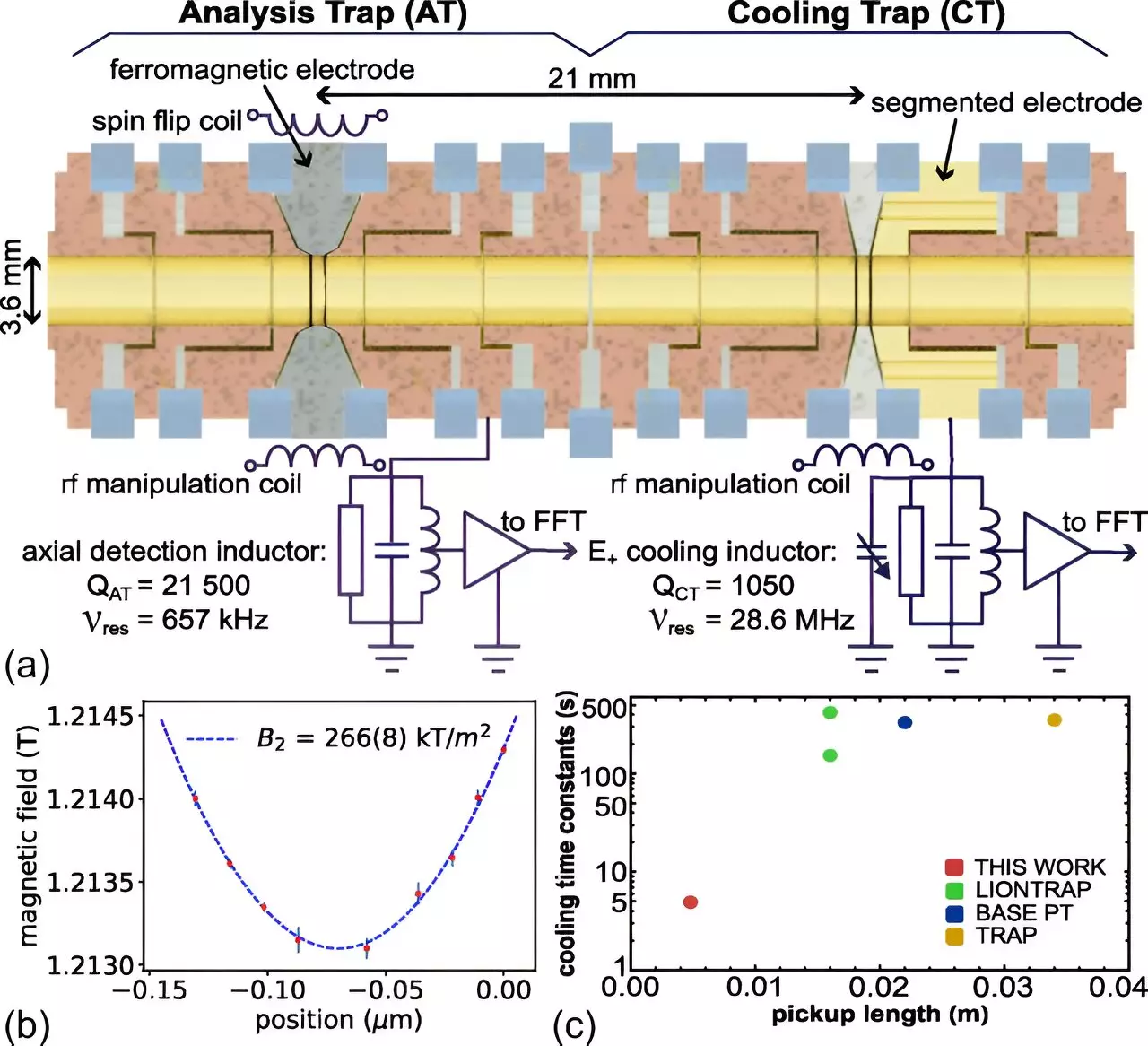The quest to understand the imbalance between matter and antimatter in the universe has been a long-standing mystery in the field of particle physics. The recent breakthrough by the BASE international research collaboration at CERN has opened up new possibilities for measuring the mass and magnetic moment of antiprotons with unprecedented accuracy.
According to the standard model of particle physics, equal amounts of matter and antimatter should have been created during the early stages of the universe. However, the existence of material objects in the universe today indicates a slight surplus of matter over antimatter. This anomaly challenges the core principles of the standard model and has prompted physicists to seek ways to expand our understanding of the fundamental laws of nature.
The BASE collaboration, consisting of researchers from various institutions including Heinrich Heine University Düsseldorf, has set out to unravel the mysteries surrounding antimatter. By developing a new trap that can cool individual antiprotons at a much faster rate than previous methods, the researchers have paved the way for more precise measurements of the properties of antimatter particles.
The key to unlocking the secrets of antimatter lies in the ability to measure fundamental physical parameters with extreme precision. The researchers at BASE are focusing on high-resolution measurements of spin-flip quantum transitions in ultra-cold antiprotons to determine their magnetic moments. By improving the cooling process for antiprotons, the researchers have significantly reduced the time needed to prepare particles for measurement, allowing for a more efficient and accurate data collection process.
The innovative cooling method developed by the BASE collaboration, known as the “Maxwell’s daemon cooling double trap,” has revolutionized the way antiprotons are prepared for experiments. By selectively cooling only the coldest antiprotons and rejecting warmer particles, the researchers are able to achieve the required measurement statistics in a fraction of the time compared to previous techniques. This breakthrough has not only accelerated the research process but has also enhanced the accuracy of measurements by orders of magnitude.
Looking ahead, the researchers at BASE are striving to further enhance the accuracy of their measurements by constructing a mobile particle trap that can transport antiprotons from CERN to a new laboratory at HHU. By leveraging advanced trapping techniques developed by physicists like Wolfgang Paul and Hans G. Dehmelt, the researchers aim to push the boundaries of antimatter research and gain deeper insights into the fundamental nature of the universe.
The groundbreaking work of the BASE collaboration represents a significant step forward in our quest to unravel the mysteries of antimatter and its role in the universe. By pushing the boundaries of experimental techniques and embracing innovative approaches to particle physics, researchers are paving the way for a new era of discovery and understanding in the field of antimatter research.


Leave a Reply
You must be logged in to post a comment.